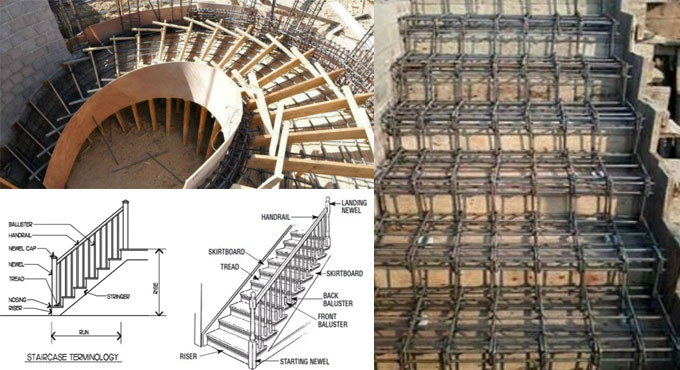NEWS | SOFTWARE | SHEET
Requirements for Good Staircase
Good staircase must offer a comfortable, swift and secure means of travel connecting the different floors of the building. Common prerequisites for good staircase are listed subsequently:
Stairs must be placed in a way that they’re simply reachable from the various rooms of the structure.
Proper lighting and ventilation must be there.
It must have adequate stair width in order to serve several individuals in rush hours or during events. Usually, for internal stairs, the stair width has got to be no less than 50 cm in houses, while 90 cm in motels, inns, flat, & industrial structures and 1.1 m for different types.
The no. of steps in a flight of stairs must be set and at least three.
Sufficient headroom must be offered. Vertical clearance must not be below 2.15 m.
Dimension of stair treads and risers must usually be uniform from the convenience viewpoint. Treads must be 25 to 325 cm wide, besides nosing. Stair treads below 25 cm width must have a nosing of approximately 25 cm. The most convenient riser’s height is 17.5 to 18.5 cm. In general, the subsequent formula must be utilized:
a. The product of tread and riser should be within 400 and 410.
b. Sum of riser and tread should be between 42.5 and 43.5 cm.
d. Addition of the tread and two times the riser should be within 60 and 64 cm.
Stair width relies on the design and significance of the building. For residential buildings, it must be set as 1 m.
The no. of stairs needed must be depending on the utmost floor area. The no. of individuals that could be accommodated by stairs for each floor for each 55 cm stair width unit must be 15 for clinics and hospitals, while 30 for housing & institutional structures, while 45 for storehouses, while 60 for commercial & industrial buildings as well as cafés & theatres, while 80 for galleries & auditoriums, and while 320 for sports grounds.
The minimal landing width must be equal to the stairs width.
The utmost and least pitch must be 40’ and 25’ correspondingly in all stairs.
Winders must be offered at the flight lower end, unless it is necessary. Usually, the utilization of winders in a staircase must be prevented.
In open-well stairs, with the objective to prevent the chance of mishaps, balustrade should be offered.
The consideration of live loads on stairs has been specified by IS: 875-1964. The landings and stairs must be set for a live load of 300 kg/m in structures wherein there’re no chances of congestion. For storehouse and halls, where congestion is possible, the live load could be assumed as 500 kg/m2.


